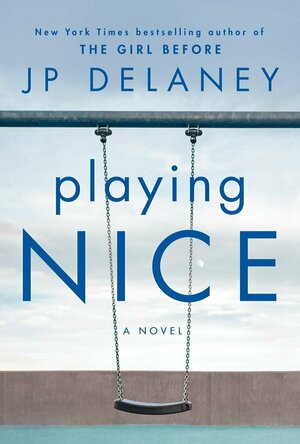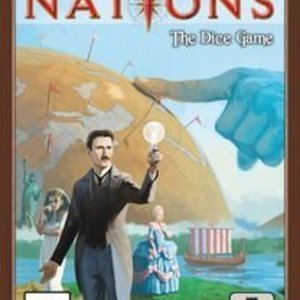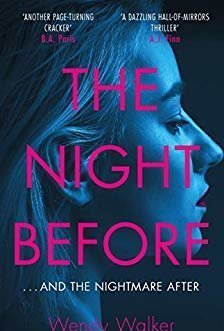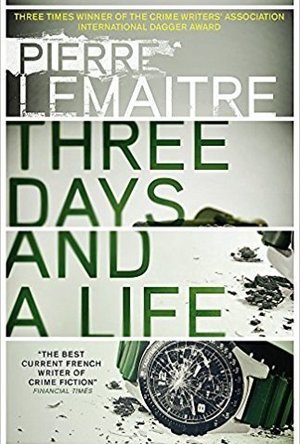JT (287 KP) rated The Time Traveler's Wife (2009) in Movies
Mar 10, 2020
Patrick Swayze and Demi Moore had Ghost, Sandra Bullock and Keanu Reeves, The Lake House so The Time Traveller’s Wife had to go one step further. Special collections librarian Henry DeTamble (Eric Bana) has a genetic anomaly that allows him to time travel; however, he is not able to control the moment or the destiny of his voyages.
The film is based on the novel by Audrey Niffenegger and not having read the book it’s hard to say whether or not the film did it justice? That said, it’s elegantly shot and Bana and fellow on screen love interest Clare (Rachel McAdams) seem perfectly suited to their roles.
Bana is a likeable actor and has been portrayed in some pretty powerful films including Chopper, Black Hawk Down and Munich
A man who only has the love for one woman but is unable to control his ability in disappearing, he is desperate to find a cure and won’t let anything stand in his way. The time travelling plot is a little stupid. Henry is unable to control when he goes but always seems to pop up in similar places both in the past and the future, and always naked?
In the beginning he visits his wife Clare on more than one occasion as a child and as she grows older. Certainly it’s a better directed film than the Butterfly Effect in which Ashton Kutcher time travelled more often than a gas meter reader pops into your house.
The Time Traveller’s Wife is a film with nagging questions and at times head scratching conclusions but this is a love story of beauty, and for that it’s worth a watch.

We Have Your Daughter: The Unsolved Murder of Jonbenet Ramsey Twenty Years Later
Book
New information from We Have Your Daughter has been revealed. Here is some of it. The Family As a...
Kristy H (1252 KP) rated Playing Nice in Books
Sep 17, 2020
"'I'm sorry to have to tell you that Theo isn't your son. He's mine.'"
Delaney's latest is a fast and compulsive read. Told in alternating perspectives from Maddie and Pete, with some flashes to the past, the book is stressful and makes you think. What would I do in this situation? And what a terrible situation to be in. With both boys being two-years-old, they are already comfortable in their family lives. At first, each family is determined not to switch the children back. But it soon becomes clear that Theo is progressing better than David, who requires more specialized care. Is that what's affecting Miles out-sized affection for his newfound son? His constant, unannounced appearances on Pete and Maddie's doorstep? Meanwhile, Maddie feels wracked with guilt at leaving David behind. The emotions and decisions are clearly complicated.
I myself was fascinated that Delaney brought up a "baby switch" case in Charlottesville, VA at the hospital where I was born, though far earlier. If I had known about this case, I must have forgotten; I would have been in my mid-teens and probably not caring about such things at the time. Anyway, it was intriguing to hear a local reference, and it totally pushed me down the rabbit hole of researching that case (which is completely tragic).
It's hard to truly like any of these characters, even Maddie and Pete, who are initially sympathetic. Let's not even get started on Miles, who truly plays the villain well. But I appreciated that the characters and their feelings are complicated and well-portrayed here. While much of the story is character-driven, it's also a mystery, unraveling what happened when the boys were switched, and it's quite interesting.
The plot in this one moves quickly, escalating fast. I predicted the ending, but it didn't do much to diminish my enjoyment of the book. If you're looking for a different and fast-paced thriller, which also gets you thinking about emotional family dilemmas, definitely recommend. 3.5 stars.
Kristy H (1252 KP) rated Only Ever Her in Books
Jun 21, 2019
"Some people hear their mother's voices in their heads, but Annie hears her aunt's, the closest thing she has to a mother."
This book wasn't anything like what I was expecting, and honestly, it was a rather strange tale, but it was still rather interesting. It's a character-driven read, not a suspense novel, but wow, I got really attached to some of these characters. I picked this one up based solely on the strength of the last Marybeth Mayhew Whalen novel I read, WHEN WE WERE WORTHY. She has a real knack for capturing her characters: they jump off they page and stick with you. In particular, I fell hard for Faye and Clary in this one. And, of course, there was Annie, who was always there, motivating nearly every character:
"She has to make the town happy, like she always has. It is her act of service, her offering on behalf of the greater good. When you're the only survivor of the town's darkest moment, you do whatever you can to bring light."
There are a lot of narrators in the novel, but together they expertly show the web and ties of a small town, where it seems everyone has a secret of some sorts. I thought the beginning of the book was a bit slow, but it picked up in the second half, becoming rather dramatic and suspenseful. It's also an emotional read, as you become more and more invested in the characters. I expected more with Annie's storyline and disappearance--the ending sort of fizzled there for me. The more compelling piece is truly her mother's murder and its aftermath, especially on Faye.
Still, this was an interesting and poignant read featuring some excellent characters. While it was a bit slow to start, I found myself quite immersed in the second half. I really enjoy what Whalen can do with her small town personalities. 3.5 stars.

Real-Deal Brides Podcast
Podcast
Wedding planning is fun, but brides and grooms need to know the "real-deal" in order to help them...
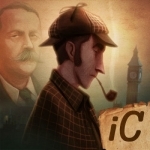
The Interactive Adventures of Sherlock Holmes
Book, Education and Stickers
App
iClassics: Beyond Engrossing iClassics unites the old and the new to create immersive experiences...

ListeningDrill-Learn English
Education and Entertainment
App
Learn Spanish, French, Chinese, Japanese, German, Korean etc. Drama , Movies Uploading / Classical...
Purple Phoenix Games (2266 KP) rated Nations: The Dice Game in Tabletop Games
Aug 16, 2019 (Updated Jul 17, 2021)
Nations: The Dice Game (can I please just call it Nations for this review as we know I am not talking about the original? Thanks.) is a civilization building, upgrade tile drafting, dice game for one to four players. Players will be upgrading their civilizations over four game rounds to compete for Books and VPs. The player with the most VP at the end of the game is the winner.
Disclaimer: The photos shown here is for a solo game, as I took them during my learning game using the solo rules. Normally the purple d4 is not used in multiplayer games. -T
To setup, each player will choose a starter civilization mat, receive five white dice, a gold chit, and a re-roll chit. Player order will be determined by cards and each player will receive their player order card which doubles as a reference card (great idea). The Progress Board will be set on the table and populated with randomized Age I Progress tiles according to the rule book. The Score Board will also be placed on the table to track Books, Events, and final VPs. The game begins with each player rolling their five dice.
Nations (TDG) is played over four ages with multiple rounds per age. At the beginning of each age old tiles will be removed from the Progress Board and new ones for the current age added. Also an Event tile will be drawn and placed on the Score Board to signify goals for Famine and War at the end of the age. On a player’s turn they will take one action from the following: Re-Roll (any or all unused dice by spending a re-roll chit), Buy tile (from the Progress Board to upgrade player mat spaces and dice), or Build Wonder (tile using Stone dice or chits for VP). When a player has taken as many turns/actions they wish for the age, they turn their player order card to the side to indicate they have passed for the remainder of the age.
Once all players have passed, they will tally their unused dice and any chits showing Books to be recorded on the Book track. Players will score points for Books based on how many opponents they have outscored for Books. Then players will consult the face-up Event tile that was revealed at the beginning of the round. The top portion displays VP earned when players discard unused dice and chits showing Famine leaf icons matching or exceeding what is on the Event tile. Similarly, for War players will consult the Event tile and use the sword icons on unused dice and chits to score any VPs for War. Play continues in this way across all four ages and once the fourth age has been scored the game ends and winner named victorious!
Components. I have mostly good news here. The dice in this dice game are wonderful. They are all easy to read and understand, and feel great when rolling nine or ten of them at once. The chits are fine, the Progress and Event tiles are nice and thick. The player mats, Score Board, and Progress Board are very thin though. I was going to give that a negative remark, but you know, players don’t really handle them during the game so there is no real need for them to be any thicker. The art is similar as in Nations, and while it does not resonate with me, it is fine. I won’t be playing Nations for the art.
All in all the game is fine. It didn’t blow me away or completely replace Nations (the big game) for me. It IS a pretty quick game to play, so there is one definite improvement over the big brother game; 10-15 minutes per player is pretty spot on. I usually do not prefer dice games to the originals (BANG! The Dice Game being the obvious improvement), and this one is really just on par with the big game. While it takes up less space on the shelf, I wouldn’t necessarily recommend it over its sibling. I feel the same way about each game, so my recommendation is get the version you feel would be played more often. Purple Phoenix Games gives Nations: The Dice Game a Montezuma-should-be-in-Age-IV 6 / 12. Give it a shot if you are into dice games, but grab the original if you want something meatier.
Kristy H (1252 KP) rated The Night Before in Books
Jun 21, 2019
So this wasn't exactly what I was expecting, and I have to admit, it was a slightly strange and weird--almost trippy--read. The book alternates between Laura and Rosie's viewpoints, with Laura's leading up to and covering her blind date, while Rosie's cover the "after" period, when she searches for her sister. No matter what, I will emphasize that the book mainly held my interest, and while I didn't love it as much as many other reviewers, it was an interesting read, for sure. It's different, too, which is always fun and sometimes hard to find when it comes to thrillers. I just wasn't as "wowed" as I'd hoped, based on some of the reviews I'd read.
The premise here is that Laura has a horrible track record with men. And that she has a bit of a history with violence and unpredictability. The first part you will certainly get, as it's hammered over and over. And over. A bit too much for my taste. We get it. She has bad taste in men and makes poor choices. The second part--her unreliability and potential for violence--is a bit more intriguing. Instead of Rosie thinking that something might have happened to Laura, she almost fears Laura might have done something to her date. I liked this premise: it goes back to the fact that the book was different. A lot of this stemmed to Laura's past and a mysterious encounter with an old boyfriend, which was slowly revealed.
"It was in my hand. The weapon that killed him. But that night didn't change me. That night made me see what I've always been."
There are definitely some interesting twists in this one. Some, eh, while others were very unexpected. But, more in the far-fetched unexpected realm, versus whoa!, which led to a little bit of my letdown feeling. I wasn't particularly impressed with the big reveal of whodunnit and had no real attachment to any of the characters, including Laura, which was a bit disappointing.
Still, as I said, this one definitely held my interest, especially in the last 1/2 - 1/3 of the book. It's different and a little weird and dark. Some of the twists didn't really do it for me, but there are a ton of people who really liked this one, so take my review with a grain of salt. I'm still glad I read this book, and I will definitely continue to seek out Wendy Walker's books, as they are always a fun read. 3+ stars.
Zuky the BookBum (15 KP) rated Three Days and a Life in Books
Mar 15, 2018
This book is very much about neighbourly relationships. It's based in the small village of Beauval where everyone knows everyone, there are friends in the village and there are enemies. They live everyday surrounded by people who know everything about them. There are a load of books about the small-town-mentality at the moment, it's clearly a very "in" thing for authors at the moment. Some of them I like, others I find boring or distressing. This one was just perfect for me!
We begin the novel in 1999 and this is where we get most of the small-town vibes. We meet Antoine and his mother, whose only worry is to keep up with appearances. We meet the neighbours, the Desmedt's and Mouchottes. We meet the town butcher, Monsieur Kowalski. We meet the Weiser's - the mayor and his son Theo. We meet a lot of different people, but they all have a very important role to play within the story.
It's the 23rd December 1999 and little Remi Desmedt has gone missing. There are plenty of the theories as to his disappearance, but we know what's happened to him, and we know where he is. What follows is a slow paced novel about the effects of Remi's disappearance on the town and the theories and judgments each villager makes on anyone suspected of having taken the young boy.
The majority of this novel is set in the few days after Remi's disappearance in 1999. This was definitely my favourite part of the novel. It was enjoyable to follow the story through Antoine's mind-set, who is 12 at the time. But as we move through the story, we meet Antoine again in 2011 and then again in 2015, but these parts of the book aren't as enjoyable to read.
As we progress through the novel, Antoine keeps coming up against challenges he needs to overcome. Will he do the right thing, or will he do anything to keep his secrets close?
Like I said before, this novel is slow paced, but I quite like that in a books sometimes. This is advertised as a thriller but I wouldn't think of is like that, this feels more like a general fiction novel to be honest. This was also described as "suspenseful", but again, I'm going to disagree with that. See what I mean about not being able to describe my feelings on it? I'm at a loss for words on what I feel this books was like! What I can say is that I love Lemaitre's way of writing. It really sucked me into the story and for this reason, I'm definitely checking out his other stuff!
Something I also know is that I enjoyed this book, for the most part. If it hadn't been for the 2011 and 2015 chapters, and the direction they took, this could have been a 5 star read for me.

